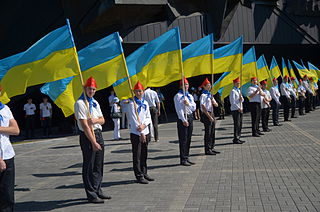
A holiday is a day set aside by custom or by law on which normal activities, especially business or work including school, are suspended or reduced. Generally, holidays are intended to allow individuals to celebrate or commemorate an event or tradition of cultural or religious significance. Holidays may be designated by governments, religious institutions, or other groups or organizations. The degree to which normal activities are reduced by a holiday may depend on local laws, customs, the type of job held or personal choices.
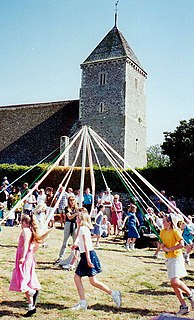
May Day is a public holiday usually celebrated on 1 May. It is an ancient Northern Hemisphere spring festival and a traditional spring holiday in many cultures. Dances, singing, and cake are usually part of the festivities. In the late 19th century, May Day was chosen as the date for International Workers' Day by the Socialists and Communists of the Second International to commemorate the Haymarket affair in Chicago. International Workers' Day can also be referred to as "May Day", but it is a different celebration from the traditional May Day.
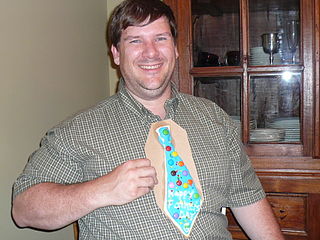
Father's Day is a celebration honoring fathers and celebrating fatherhood, paternal bonds, and the influence of fathers in society. In Catholic Europe, it has been celebrated on March 19 since the Middle Ages. This celebration was brought by the Spanish and Portuguese to Latin America, where March 19 is often still used for it, though many countries in Europe and the Americas have adopted the U.S. date, which is the third Sunday of June. It is celebrated on various days in many parts of the world, most commonly in the months of March, April and June. It complements similar celebrations honoring family members, such as Mother's Day, Siblings Day, and Grandparents' Day.
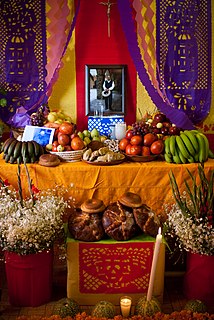
The Day of the Dead is a Mexican holiday celebrated throughout Mexico, in particular the Central and South regions, and by people of Mexican heritage elsewhere. The multi-day holiday focuses on gatherings of family and friends to pray for and remember friends and family members who have died, and help support their spiritual journey. In 2008, the tradition was inscribed in the Representative List of the Intangible Cultural Heritage of Humanity by UNESCO.
NYC Midsummer or Swedish Midsummer is a Swedish midsummer celebration organized since 1996 in one of New York City's parks on the Friday afternoon close to the June solstice, or St John's Day. For several years now, Battery Park City in lower Manhattan has hosted this event. A sizable portion of the Swedish expatriate community in NYC shows up to celebrate Midsummer the Swedish way. The event in Battery Park City is co-hosted by the Swedish consulate and Hugh L. Carey Battery Park City Authority.
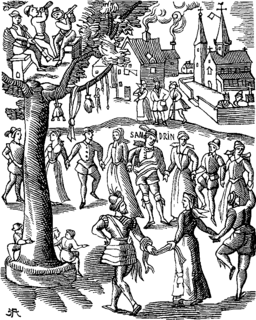
A festival is an event ordinarily celebrated by a community and centering on some characteristic aspect of that community and its religion or cultures. It is often marked as a local or national holiday, mela, or eid. Next to religion and folklore, a significant origin is agricultural. Food is such a vital resource that many festivals are associated with harvest time. Religious commemoration and thanksgiving for good harvests are blended in events that take place in autumn, such as Halloween in the northern hemisphere and Easter in the southern.

A bonfire is a large but controlled outdoor fire, used either for informal disposal of burnable waste material or as part of a celebration.

In the Gregorian calendar, New Year's Eve, the last day of the year, is on 31 December. In many countries, New Year's Eve is celebrated at evening social gatherings, where many people dance, eat, drink alcoholic beverages, and watch or light fireworks to mark the new year. Some Christians attend a watchnight service. The celebrations generally go on past midnight into New Year's Day, 1 January.

Allhallowtide, Hallowtide, Allsaintstide, or the Hallowmas season, is the triduum encompassing the Western Christian observances of All Saints' Eve (Halloween), All Saints' Day and All Souls' Day, which last from 31 October to 2 November annually. Allhallowtide is a "time to remember the dead, including martyrs, saints, and all faithful departed Christians." The present date of Hallowmas and thus also of its vigil (Hallowe'en) was established for Rome perhaps by Pope Gregory III (731–741) and was made of obligation throughout the Frankish Empire by Louis the Pious in 835. Elsewhere, other dates were observed even later, with the date in Ireland being 20 April. In the early 11th century, the modern date of All Souls' Day was popularized, after Abbot Odilo established it as a day for the monks of Cluny and associated monasteries to pray for the dead.

Easter Monday is the day after Easter Sunday and is a holiday in some countries. Easter Monday in the Western Christian liturgical calendar is the second day of Eastertide and analogously in the Byzantine Rite is the second day of Bright Week.
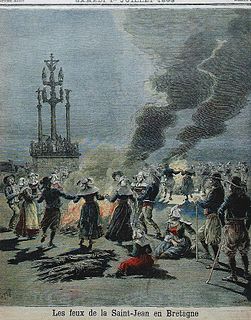
Saint John's Eve, starting at sunset on 23 June, is the eve of celebration before the Feast Day of Saint John the Baptist. The Gospel of Luke states that John was born six months before Jesus; therefore, the feast of John the Baptist was fixed on 24 June, six months before Christmas according to the old Roman calculation. This feast day is one of the very few saints' days which commemorates the anniversary of the birth, rather than the death, of the saint being honored.
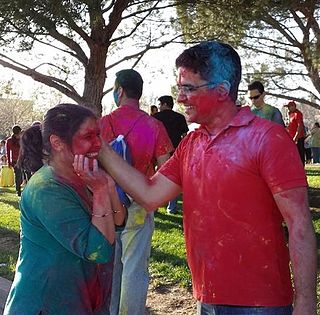
Holi is a Hindu spring festival, originating from the Indian subcontinent, celebrated predominantly in India, but has also spread to other areas of Asia and parts of the Western world through the diaspora from the Indian subcontinent, also known as the "festival of colours" or the "festival of love". The festival signifies the victory of good over evil, the arrival of spring, end of winter, and for many a festive day to meet others, play and laugh, forget and forgive, and repair broken relationships. It is also celebrated as a thanksgiving for a good harvest. It lasts for a night and a day, starting on the evening of the Purnima falling in the Vikram Samvat Hindu Calendar month of Phalgun, which falls somewhere between the end of February and the middle of March in the Gregorian calendar. The first evening is known as Holika Dahan or Chhoti Holi and the following day as Holi, Rangwali Holi, Dhuleti, Dhulandi, or Phagwah.
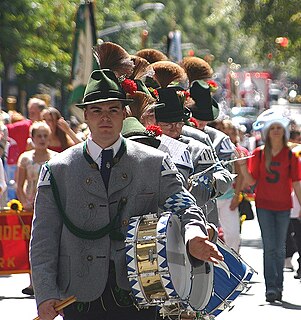
Von Steuben Day is a holiday traditionally held on a weekend in mid-September, celebrating the Prussian-born Baron Friedrich von Steuben, who arrived in the United States as a volunteer offering his services to General George Washington in the American Revolutionary War. Von Steuben is still regarded as one of the most important German Americans, as his training of the young American troops made victory against the British possible and thus his work helped in gaining independence for the United States of America. The day is generally considered the German-American event of the year; celebrations focus on parades in which participants march, dance, and play music.

Vaisakhi, also known as Baisakhi, Vaishakhi, or Vasakhi is a historical and religious festival in Sikhism. It is usually celebrated on 13 or 14 April every year.

Golowan is the Cornish language word for the Midsummer celebrations in Cornwall, UK: widespread prior to the late 19th century and most popular in the Penwith area and in particular Penzance and Newlyn. The 2018 Golowan Festival dates are 15 June to 24 June 2018. The celebrations were centred on the lighting of bonfires and fireworks and the performance of associated rituals. The midsummer bonfire ceremonies were revived at St Ives in 1929 by the Old Cornwall Society and since then spread to other societies across Cornwall, as far as Kit Hill near Callington. Since 1991 the Golowan festival in Penzance has revived many of these ancient customs and has grown to become a major arts and culture festival: its central event 'Mazey Day' now attracts tens of thousands of people to the Penzance area in late June.
Public holidays in Sweden in Sweden are established by acts of Parliament. The official holidays can be divided into Christian and non-Christian holidays. The Christian holidays are jul (Christmas). trettondedag jul (Epiphany), påsk (Easter), Kristi himmelsfärds dag, pingstdagen (Pentecost) and alla helgons dag. The non-Christian holidays are: nyårsdagen, första maj, Sveriges nationaldag and midsommar (Midsummer); Midsummer is, however, officially also a Christian holiday to celebrate John the Baptist's birthday.
Karl Wilhelm Alexander Ekman is a Swedish ballet dancer and choreographer. His choreographies have been performed by Les Ballets de Monte Carlo, the Boston Ballet, the Dresden Semperoper Ballett, the Nederlands Dans Theater, the Norwegian National Ballet, the Royal Swedish Ballet, the São Paulo City Ballet, the Sydney Dance Company and the Wiener Staatsballett. For some of them he has designed sets and costumes or composed the music.
English festivals are the Christian and secular festivals that are traditionally celebrated in England. Most festivals are observed throughout England but some, such as Oak Apple Day, Souling, Rushbearing, Bawming the Thorn and Hocktide are local to certain regions.



















